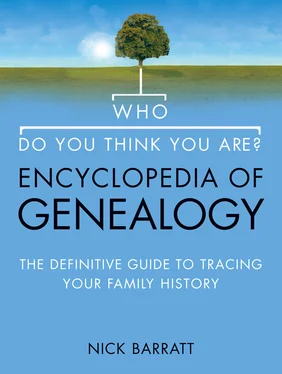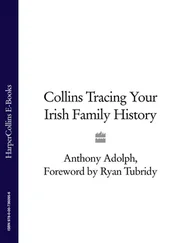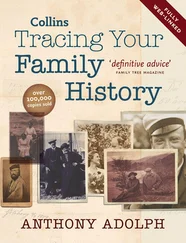Family history is big business these days, and unprecedented numbers are flocking into archives as never before. Many institutions are fairly small, with limitations on the amount of space available for researchers, particularly as many of the most popular records are only available on microfilm or microfiche. It is therefore important to check whether you need to book a seat before you visit, otherwise you may be disappointed if you simply turn up on the day.
Registration and Identification
Most archives require you to register as a user before you can view original material or use their search rooms. Usually, you are requested to produce at least one form of official identification, although these requirements will vary from archive to archive. The National Archives asks for one form of official ID, such as a bank card, driving licence, passport, or national ID card for overseas visitors, and then issues a three-year reader’s ticket which incorporates your photo, taken on the day you apply. Many county archives also need to see proof of address, and some request passport photos for their records. However, a large number of county record offices have grouped together to form CARN – the County Archive Research Network – and registration at one affiliated archive gives you access to all participating members.
It is not always evident where an archive is likely to be located. Many form part of council or municipal buildings; some are newly built, just out of town; others may have no parking facilities, or don’t have good links to public transport. Luckily, the majority of archives now maintain websites, and provide maps or necessary travel details.
… prepare for an archive visit
1. Make contact in advance
2. Book a seat
3. Check ID requirements for registration
4. Check location and travel details
5. Find out the opening hours
6. Make sure you can access the records you want
7. Check costs and facilities
There is no standard pattern to archival opening hours, so don’t assume that it will be open when you want to visit. Although many open 9–5, five days a week, some now close for at least one day midweek and offer either Saturday opening, or one late evening, or both. There is usually at least one period each year when an archive closes down for ‘stocktaking’, when checks are carried out to ensure none of the precious material they hold has gone missing.
It is also dangerous to assume you can simply turn up and expect to see the material you need. Since there are pressures on storage space, many of the less popular documents in large archives are often kept offsite, which means you may not always be able to view material on the day you plan to visit unless you’ve made prior arrangements. In addition to storage restrictions, there could be other complications. Privately deposited documents – family papers, legal archives or religious collections – often come with their own restrictions. For example, you may need to write to the depositor to secure permission to view material. It is therefore vital to check all these details before you visit to avoid disappointment.
There may be costs involved in visiting an archive. Some charge you an entry fee; others will ask you to leave your goods and belongings in a locker that requires change; and any photocopying you wish to take away with you will have to be paid for. Indeed, you may also want to buy food and drink for lunch and some archives provide snack machines, with larger institutions offering hot drinks, sandwiches or even restaurants.
Step Two: Searching for Documents
Having established which archive you need to visit, and made contact to cover the points listed above, you are ready to search their collections in the hope of finding the key documents you need to supplement your family tree. You should already have set your research goals in advance, but it might be worth writing these out, so you can hand them to the staff at the archive if you need some help. For example, you may have heard that Great-uncle Jeremy fought in the First World War, but don’t know where he served. You may therefore decide to restrict your search to establishing his movements during the war. Try to keep this ‘wish list’ focused and manageable; it is important to be realistic about how much you can get done in a day, and allow time for unexpected discoveries that may lead you into new investigations. Remember, if you don’t have time to complete all you originally wanted to do, you can always resume on a later trip.
Each archive ‘catalogues’ its possessions – that is, it gives a unique reference to every item that it collects. Alongside this unique reference there is usually a description of the item that has been catalogued. These catalogues and document descriptions are the main way that researchers identify documents they need to look at, though you should be aware that archives are complicated places, and there is not one uniform system of cataloguing documents that applies to each institution – each archive will have its own catalogue system, developed over time. Many repositories still have paper indexes to their catalogues, which need to be trawled through in person to find document references even if some of their collections have been uploaded into digital catalogues, although these days many archive catalogues are available to search online.
Amalgamated Catalogues Online
One important project aims to bring all these disparate catalogues and document descriptions together in one place on the Internet. Known as Access to Archives (A2A), it is an online database containing descriptions of over 10 million documents held in around 400 local archives across England and Wales. It aims to increase awareness of these fantastic resources and facilitate easy access to them. You can search the database by keyword, area, date range and repository name by going to www.a2a.org.uk. Full document descriptions are provided along with references and a note as to where each document is held. Many local and county record offices have submitted their catalogues to the A2A database, but it cannot be stressed enough that if you can’t find anything related to your research using A2A you still need to visit the record office itself and consult the original indexes.
The National Register of Archives (NRA) is another treasure trove of catalogue descriptions, but is arranged in a different way to the A2A catalogue. Its database of record descriptions held for around 29,000 businesses, 75,000 organizations, 9,000 families, and 46,000 individuals can be searched using four types of search engine. The NRA database is accessed via The National Archives’ website at www.nationalarchives.gov.uk/nra, where you can search under a corporate name, personal name, family name or place name. This database is fantastic for finding out about the location of company archives and the records they hold, especially if your ancestor worked for a major corporate firm.
The Scottish Archive Network has compiled an online, unified index of documents held in many archives across Scotland, which can be searched by keyword from www.scan.org.uk/catalogue. It has descriptions of over 20,000 documents from 52 archives, including the NAS and NLS.
Читать дальше












